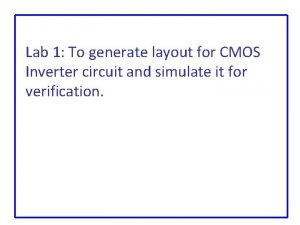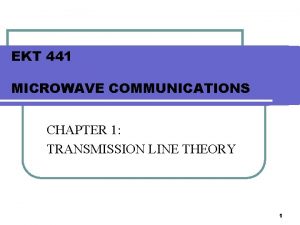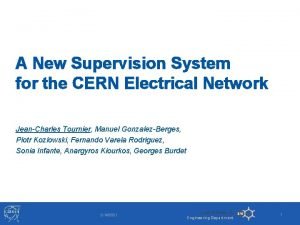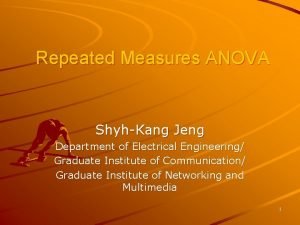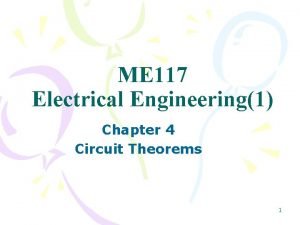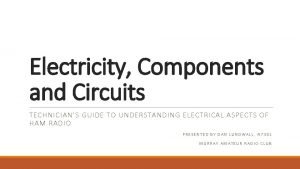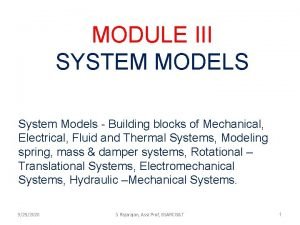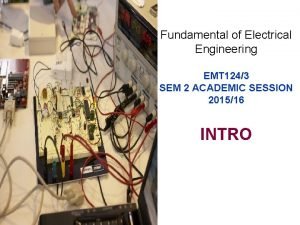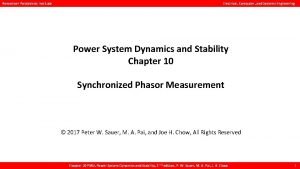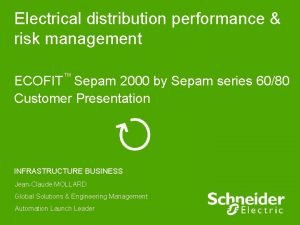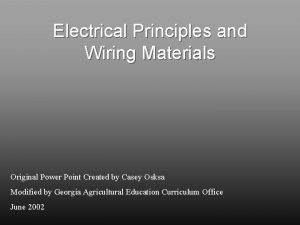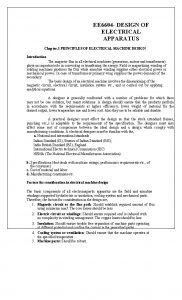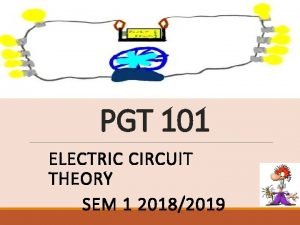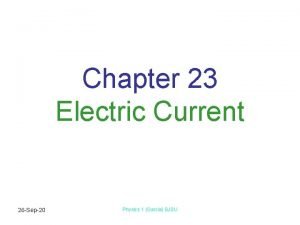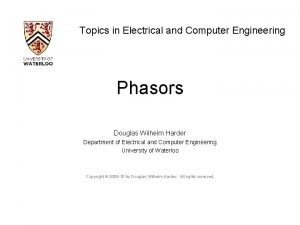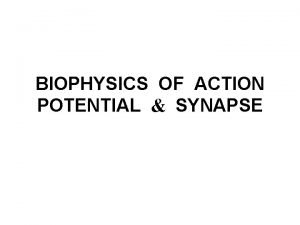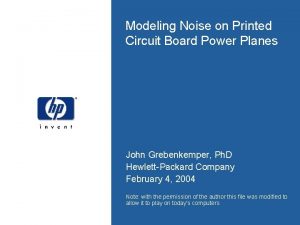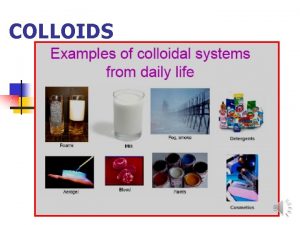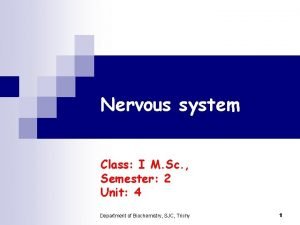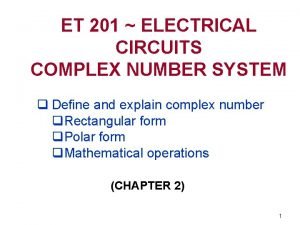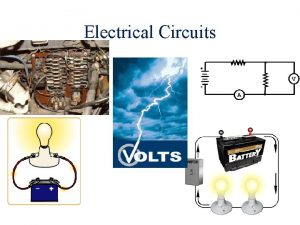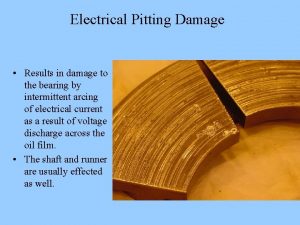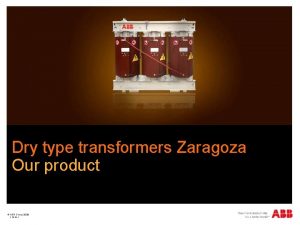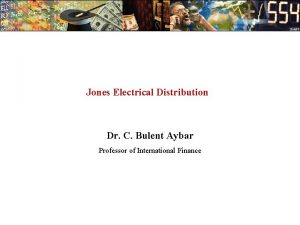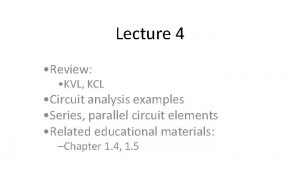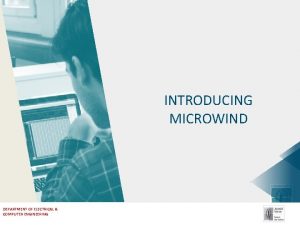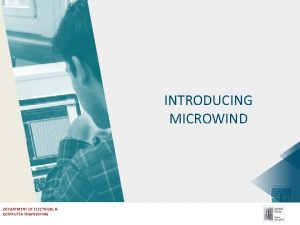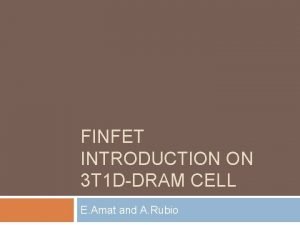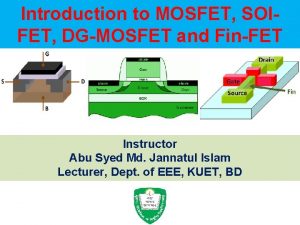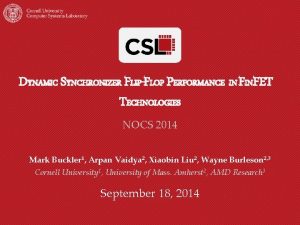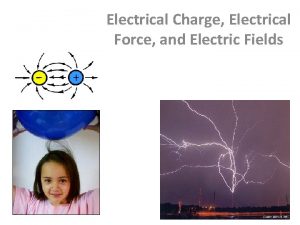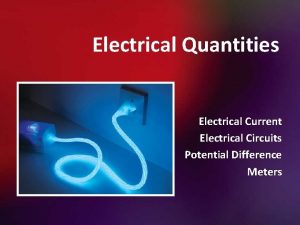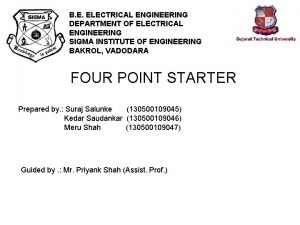14 NM FINFET IN MICROWIND DEPARTMENT OF ELECTRICAL
































































- Slides: 64

14 NM FINFET IN MICROWIND DEPARTMENT OF ELECTRICAL & COMPUTER ENGINEERING

14 -NM FINFET IN MICROWIND • An application note on 14 -nm Fin. FET has been released in June 2017 • Microwind 3. 8 has been configured to simulate Fin. FET design • Technology parameters are close to 14 -nm from Intel • The rule file cmos 14 nm. RUL is available at www. microwind. org

14 -NM MAKES THE BREAKING NEWS Feb. 2015 - http: //phandroid. com/2015/02/16/exynos-7 -14 nm/

EXAMPLES OF 14 -NM PROCESSORS 14 -nm Exynos by Samsung™ 14 -nm Snapdragon by Qualcomm™ 14 -nm Xeon by Intel ™ 14 -nm Zen Processor by AMD™

SCALE DOWN BENEFITS • Smaller • Faster • Less power 65 nm consumption • 28 nm Cheaper (if you fabricate millions) 14 nm Power -50% 65 nm 28 nm -80% 14 nm

MICROWIND FINFET • Microwind’s Fin. FET implementation based on a selection of 10 scientific publications • The Fin. FET is used starting 14 nm node • Layout, size and performances Standard cell level parasitics assessment in 20 nm BPL and 14 nm BFF P. Schuddinck, IEDM 2012 inspired from “average” 14 -nm Fin. FET • Scaling to 10 -nm & 7 -nm nodes • Application note in progress 3 -D-TCAD-Based Parasitic Capacitance Extraction for Emerging Multigate Devices and Circuits Ajay N. Bhoj, IEEE VLSI, Vol 21, N° 11, 2013

FROM MOSFET TO FINFET >= 20 nm • The Fin. FET device has a different layout style than the MOS device • Instead of a continuous channel, the Fin. FET uses fins • Fin. FET provides the same Ion current at a smaller size • Fin. FET provides lower leakage current Ioff at the same Ion <= 14 nm fins

INTRODUCING THE FINFET MOS Parameter Width (W) Length (L) Typical value 6 - 12 λ Fin. FET Parameter Number of fins (NF) Fin pitch (PF) Fin thickness (TF) Fin length or gate length (LG) Typical value 2 - 5 6 λ 1 λ 2 λ New screen in Microwind

3 D OF FINFET USING MICROWIND • Microwind P-Fin. FET enables a 3 D view of the Fin. FET Fin 4 Fin 3 Drain Fin length (LG) Fin 2 Fin thickness Fin 1 Gate (TF) Fin height (HF) N-Fin. FET Source

FIN BENEFITS • The total equivalent channel Gate width is higher in Fin. FET than in MOSFET • Weq = (2*HFIN+TFIN)*NFIN • NFIn is the number of fins (2 Fin thickness (TFIN) Fin height (HFIN) to 4 usually) • Benefit 30 -50% in current drive for the same area MOS Ioff Fin FIN from Drain to Source Total equivalent channel width Weq Patton, Evolution and Expansion of SOI in VLSI Technologies: Planar to 3 D, IEEE International SOI Conference 2012 Ion

EQUIVALENT GATE OXIDE • Gate oxide (Hf 02)

EQUIVALENT WIDTH WFIN 8 nm HFIN 40 nm NFIN=12 • What is the equivalent width (14 -nm) ?

GENERATING A FINFET • Fin Length, equal to gate length, (LG) is 2 lambda (16 nm) by default • Fin thickness (TF) is set to 1 lambda (8 nm) • Fin pitch (PF) is set to 6 lambda (48 nm) • Number of fingers (NFIN) range from 1 to 4 usually • Fin. FET comme with dummy gates for manufacturability

GENERATING A FINFET • HD: High density drawing style : 2 fins • HP : High performance drawing style : 4 fins • 1 fin exists in very high density cells such as SRAM • Fin. FET with more than 4 fins drive string currents

FIN, GATE AND METAL PITCH • Illustration of fin, gate and metal 1 pitch for 14 -nm technology

FINFET MANUFACTURABILITY • Fins should be aligned and horizontal, regular pitch 6 (1+5) • Non-aligned fins may lead to gate distortion and current performance spread Ion Ioff

FINFET MANUFACTURABILITY • Gates should be aligned and vertical, regular pitch with 8 minimum (2+6)

FINFET CURRENT DRIVE • In 14 -nm, 12 fins are needed to have an equivalent width around 1µm • One fin has 2*HFIN+WFIN equivalent channel width • Ion should be around 1. 3 m. A for Weq=1µm • A Mos. FET design would require nearly twice the area

FINFET CURRENT DRIVE • INTEL’s 14++nm CMOS technology: Ion 2 m. A/µm with Ioff 10 n. A, the word’s highest performance transistors Ioff Dr. Ruth Brain, 14 nm technology leadership, Intel, TECHNOLOGY AND MANUFACTURING DAY Ion

FINFET OPTIONS ACRONYM MEANING THRESHOLD USED FOR VOLTAGE DRAWBACK LL - RVT Low leakage, Regular VT 0. 32 Default Slow HS - LVT High speed - Low VT 0. 28 High speed functions Leakage current Timing critical functions Very high leakage & power consumption VHS – SLVT (n. a) Very high speed 0. 22 - Super low VT Jin, M. , Reliability characterization of 10 nm Fin. FET technology, IEDM 2016

FINFET DRIVE IN MICROWIND 1. 5 m. A/µm • The BSIM 4 model has been tuned to 1. 3 m. A/µm Ion=1. 5 m. A @10 n. A for Ion=1. 3 m. A @1 n. A for High Speed, Low VT (HS – LVT) Ion=1. 2 m. A @1 n. A for Low Leakage, regular VT (LL – RVT) Not as impressive as Intel’s 14++, but close to 14 nm first generation LL – RVT HS – LVT

ION, IDSAT, IEFF • Average IDS during switching IEFF = 0. 73 m. A ION never reached

FINFET EXAMPLE • Hand-made Fin. FET inverter • 2 -fin strategy for high density • Dummy poly gates on both sides for manufacturability

3 -STAGE RING OSCILLATOR • 3 inverters connected for a free oscillation • Use 4 fins for fast switching • Investigate « high-speed » option • Investigate « boost » on VDD

3 -STAGE RING OSCILLATOR LL : 190 GHz 0. 12 m. W VDD = 0. 80 V HS: 204 GHz 0. 15 m. W VDD = 0. 80 V HS Max : 230 GHz 0. 27 m. W VDD = 0. 90 V

3 -STAGE RING OSCILLATOR At same power dissipation, the oscillation is 4 times faster 3 -stage Ring Oscillator performances 160 14 -nm @0. 8 V Fin. FET 45 -nm @1 V Mos. FET 140 120 Power (µw) • Speed x 4 at same power 100 Power /3 at same speed 80 20 -nm @0. 9 V Mos. FET 60 High speed 40 Low leakage 20 0 0 50 100 150 Oscillating Frequency (GHz) 200 250

VARIABILITY • Monte-Carlo analysis with 100 sets of technology parameters

CONVERT MOSFET TO FINFET • The command Edit > Convert into Fin. FET creates fins from Ndiffusion • Only works for vertical gates • Generate fins according to fin pitch (r 308)

COMPILE LOGIC GATES • The cell compiler enables direct logic gate compilation, including dummy gates, 2 or 4 fins. • Some basic cells are accessible within a click

COMPILE LOGIC GATES • Nor 2 2 fins • And 3 4 fins

COMPILE COMPLEX GATES • A|(B&C) : yes we can (but not always win…)

INTERCONNECTS • Generate a full stack of metal layers with min width and min spacing (min pitch) • Edit > Generate > Bus • Select “all layers” • Select length 1µm as many available data are given in af/µm, Ω/µm, a. H/µm

10 NM INTERCONNECTS Air Metal 8 Metal 7 Metal 5, 6 Metal 3, 4 Metal 1, 2 Gates Substrate

CAPACITANCE Capacitance with upper layer Coupling capacitance Capacitance with lower layer

PATTERNING Pitch (nm) λ Patterning 110 100 90 Single 45 -nm 20 All 32 -nm 18 M 3 -M 8 20 -nm 12 M 7 -8 14 -nm 8 M 7 -8 10 -nm 6 M 7 -8 7 -nm 4 M 7 -8 Integration • >120 80 70 60 50 Double SINGLE M 1 -M 2 DOUBLE 40 30 20 Quad QUADRUPLE Gate M 5 -M 6 M 3 -M 4 M 1 -M 2 Complexity Simple, Double, Quadruple (and so does the cost. . ) Gate

XOR GATE • 6 -Transistor implementation do not work correctly in nano-CMOS 6 T – Bug ! Very large delay

XOR GATE • 16 -Transistor implementation used in Microwind compilation of XOR gates 16 T - safe

XOR DESIGN • 16 -T XOR GATE : 2 fins • High density • 7 ps delay worst case (Low leakage)

XOR DESIGN • 16 -T XOR GATE : 4 fins • High performance • 5 ps delay LL, 4 ps delay HS option • Firestarter: 3. 3 ps (HS, VDD boost 0. 95 V)

14 NM 6 T MEMORY • 6 T-Static RAM memory in 14 -nm : 0. 050µm 2 Bonding box 328 x 129 nm Shared Data contact Single fin inverter Double fin pass transistor Shared supply contacts

10 NM FINFET IN MICROWIND DEPARTMENT OF ELECTRICAL & COMPUTER ENGINEERING

10 -NM FINFET IN MICROWIND • An application note on 10 -nm Fin. FET has been released in June 2017 • Microwind 3. 8 has been configured to simulate Fin. FET design • Technology parameters are close to 10 -nm available publications (Intel) • The rule file cmos 10 nm. RUL is available at www. microwind. org

10 -NM & 7 -NM CHIPS • Samsung Exynos 8895 in 10 -nm • IBM, Global. Foundries, Samsung, SUNY first 7 -nm testchip • Qualcomm Snapdragon 635 in 10 -nm

10 -NM FINFET • Intel has released information about 10 -nm Fin. FET technology • The fin pitch is decreased according to scale down • The fin height is increased for increased current drive Mistry, K. (2017). 10 nm technology leadership, Technology and Manufacturing Day, Intel. 2017.

10 -NM FINFET TECHNOLOGY • An application note has been released in June 2017 on 10 -nm technology • Key features of the 10 -nm node are described

EQUIVALENT WIDTH • In microwind: 10 -nm Fin. FET almost unchanged: HFIN=40 nm, WFIN reduced to 6 nm WFIN 6 nm HFIN 40 nm NFIN=12

10 -NM n-Fin. FET High Speed Low VT N-Fin. FET Weq=1µm Low leakage Regular VT Ioff : 4 n. A Ion: 1. 4 m. A High Speed Low VT Ioff: 30 n. A Ion: 1. 6 m. A

10 -NM p-Fin. FET Ion: 1. 2 m. A P-Fin. FET Weq=1µm High Speed Low VT Low leakage Regular VT Ioff : 2 n. A Ioff: 12 n. A Ion: 1. 4 m. A

10 -NM INTERCONNECTS Metal 8 All metal layers at minimum width and minimum spacing Metal 7 Metal 5, 6 Metal 3, 4 Metal 1, 2 Gates Substrate

10 -NM RING OSCILLATOR Minimum • Process Voltage Temperature variations (PVT) • Access through Simulation > Simulation parameters • Direct access in simulation menu through Process Var.

10 -NM RING OSCILLATOR Typical 240 GHz Typ VDD = 0. 70 V Typ T°=25°C Typ VT, U 0 Minimum 150 GHz Low VDD = 0. 60 V High T°=125°C High VT, Low U 0 Maximum 290 GHz High VDD = 0. 81 V Low T°=-50°C Low VT, High U 0

10 NM SRAM • 6 T-Static RAM memory in 10 -nm, high density : 0. 024 µm 2 Bonding box 246 x 96 nm Shared Data contact Single fin inverter Double fin pass transistor Shared supply contacts

7 NM FINFET IN MICROWIND DEPARTMENT OF ELECTRICAL & COMPUTER ENGINEERING

7 NM APPLICATION NOTE • An application note on 7 -nm Fin. FET has been released in June 2017 • Microwind 3. 8 has been configured to simulate Fin. FET design • Technology parameters are close to 7 -nm preliminary information • The rule file cmos 7 nm. RUL is available at www. microwind. org

EQUIVALENT WIDTH • In Microwind: 7 -nm Fin. FET : HFIN = 35 nm, WFIN = 4 nm WFIN 4 nm HFIN 35 nm NFIN=14

7 -NM N-Fin. FET 14 fins Weq=1µm Low leakage Regular VT Ion: 1. 4 m. A High Speed Low VT Ion: 1. 7 m. A VDD=0. 65 V Low leakage Regular VT Ioff : 1 n. A High Speed Low VT Ioff: 10 n. A

7 -NM P-Fin. FET 14 fins Weq=1µm Ion: 1. 5 m. A Ion: 1. 2 m. A Low leakage Regular VT High Speed Low VT VDD=0. 65 V Low leakage Regular VT Ioff : 1 n. A High Speed Low VT Ioff: 10 n. A

FINFET THRESHOLD VOLTAGE • VTO as described in the BSIM 4 model corresponds to long channel MOS • VTO for short channels is always lower • Parameters DVT 0 and DVT 1 used to tune VTO (length) VTO for 2 lambda HV LL - RVT HS - LVT N-channel Fin. FET P-channel Fin. FET

XOR 2 INPUTS • 16 -T XOR GATE : 2 fins • High density • 4. 5 ps delay worst case (Low leakage)

10 -NM RING OSCILLATOR Typical 240 GHz Typ VDD = 0. 70 V Typ T°=25°C Typ VT, U 0 Minimum 150 GHz Low VDD = 0. 60 V High T°=125°C High VT, Low U 0 Maximum 290 GHz High VDD = 0. 81 V Low T°=-50°C Low VT, High U 0

COMPARING 14 NM AND 7 NM • Ring Oscillator 2 Fins 3 stages Fan-Out 3 (FO 3) 7 -nm 175 GHz 14 -nm 100 GHz Min VDD 0. 55 V + 75% performance increase Min VDD 0. 50 V VDD 0. 85 V VDD 0. 65 V

7 NM INTERCONNECTS Metal 8 High quality inductor, supply, flip chip connection Metal 7 Supply routing Metal 5, 6 Long interconnects Metal 3, 4 Medium interconnects Metal 1, 2 Short interconnects Fin. FET Gates Substrate

7 NM 6 T HIGH DENSITY SRAM • 6 T-Static RAM memory in 7 -nm, high density : 0. 010 µm 2 Bonding box 164 x 64 nm Shared Data contact Single fin inverter Double fin pass transistor Shared supply contacts

INVESTIGATE TECHNOLOGIES • A quick access to technology is proposed in Simulation Parameters • Mos. FET technologies range from 0. 18µm to 20 nm • Fin. FET technologies (red) start from 14 nm • Mos. FET and Fin. FET designs are not compatible
 Cmos inverter layout design
Cmos inverter layout design Electrical engineering department
Electrical engineering department Tum department of electrical and computer engineering
Tum department of electrical and computer engineering Ucla systems engineering
Ucla systems engineering Unit 1 post test
Unit 1 post test Swr formula
Swr formula Electrical system supervision
Electrical system supervision Anova electrical
Anova electrical Substation physical security
Substation physical security Take 5 electrical safety
Take 5 electrical safety Electrical theorems
Electrical theorems Thank you images in electrical
Thank you images in electrical Electrical component
Electrical component Electrical engineering subdisciplines
Electrical engineering subdisciplines Magnetic materials used in electrical machines
Magnetic materials used in electrical machines Module 00105
Module 00105 Mechanical system gmod
Mechanical system gmod Emt subject in engineering
Emt subject in engineering Secondary terminal voltage of transformer
Secondary terminal voltage of transformer Chapter 39 electrical fundamentals
Chapter 39 electrical fundamentals University of belgrade school of electrical engineering
University of belgrade school of electrical engineering Fau computer engineering flowchart
Fau computer engineering flowchart Rensselaer polytechnic institute electrical engineering
Rensselaer polytechnic institute electrical engineering Ecofit electrical
Ecofit electrical Unit 33 electrical principles and wiring materials
Unit 33 electrical principles and wiring materials Properties of nerve
Properties of nerve Design of electrical apparatus
Design of electrical apparatus Microshock and macroshock
Microshock and macroshock R & m electrical group ltd
R & m electrical group ltd Electrical currents
Electrical currents Electrical theory 101
Electrical theory 101 Electrical safety introduction
Electrical safety introduction Electrical current
Electrical current Use of synchronous motor
Use of synchronous motor Phasors electrical engineering
Phasors electrical engineering Raceways electrical
Raceways electrical Electrical separation
Electrical separation What are electrical synapses
What are electrical synapses Fluke electrical measurement safety test answers
Fluke electrical measurement safety test answers Computer troubleshooting flowchart
Computer troubleshooting flowchart Electrical board
Electrical board Protective colloid
Protective colloid Electrical energy formula
Electrical energy formula Electrical potential
Electrical potential Dino electrical
Dino electrical Kiernan electrical
Kiernan electrical Properties of nerve fibre
Properties of nerve fibre Et 201
Et 201 Five forms of energy
Five forms of energy Basic electrical safety course
Basic electrical safety course What is an electrical load
What is an electrical load Electrical pitting
Electrical pitting Electrical potential energy
Electrical potential energy Florida plumbing code 2016
Florida plumbing code 2016 Abb dry type transformers
Abb dry type transformers Wiggers diagram ppt
Wiggers diagram ppt Pros and cons
Pros and cons Gambaran ekg pea
Gambaran ekg pea Jones electrical distribution
Jones electrical distribution Is electricity a form of energy
Is electricity a form of energy Electrical oil services
Electrical oil services Electrical installation accessories
Electrical installation accessories Electrical network
Electrical network Kvl kcl examples
Kvl kcl examples Deguration
Deguration
